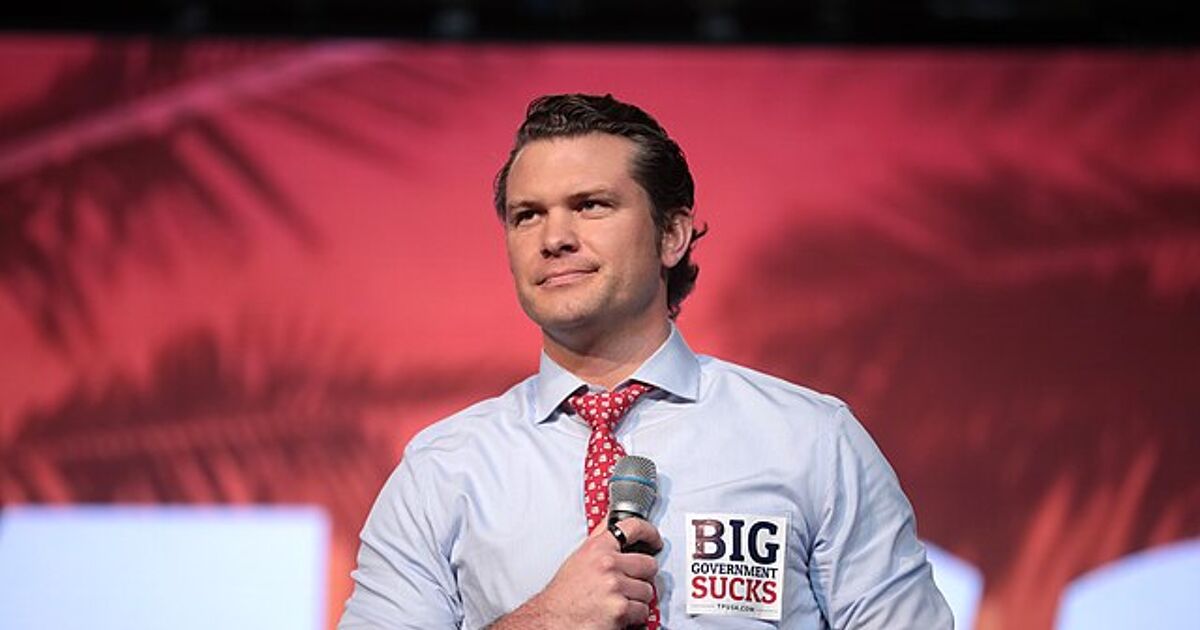
Donald Trump has officially reinstated his transgender military ban with an executive order giving Secretary of Defense Pete Hegseth 60 days to implement its directives. In addition to criticizing its blatant bigotry, many fear the order – along with Hegseth’s beliefs that women shouldn’t serve in combat – puts military readiness at risk at a time when recruitment numbers are already low.
Because the reality is that cisgender American men are not flocking to enlist.
Related
Donald Trump bans trans people from serving in the military in hateful executive order
His order says that no trans person is “honorable, truthful, and disciplined.”
In a recent op-ed for The Hill, Marine Corps veteran Jos Joseph recounted experiencing the effects of the military’s discriminatory practices firsthand.
Insights for the LGBTQ+ community
Subscribe to our briefing for insights into how politics impacts the LGBTQ+ community and more.
Subscribe to our Newsletter today
Joseph worked on the 1st Marine Division staff from 2004 to 2007. At the time, Don’t Ask Don’t Tell was still in effect, banning gay and bisexual people from serving openly in the military. He said it was “baffling” to watch the military discharge perfectly capable gay and transgender servicemembers as recruiters scrambled to find people willing to fight in Iraq.
“We needed people to fight and were begging people who didn’t want to serve while kicking out those that did,” Joseph wrote. “What dawned on me then is something that Peter Hegseth will learn… that a lot of red-blooded, alpha-male, patriotic American men are actually too scared to join the military. And a lot of women and gay and transgender and queer Americans aren’t.”
He explained that many people think everyone who fought in the Vietnam War was drafted, but in reality, most men were volunteers “who joined the military out of patriotism, financial needs, adventure or to get away from home.”
“The rest were drafted to fill the enormous gap created to fight a war so complex and unpopular. When the military did their postmortem of Vietnam, they determined that an all-volunteer fighting force would be better when fighting conflicts that might not be so popular at home. Thus was the modern all-volunteer military born.”
He said that instantly the military learned that “a lot of patriotic men do not want to join the military,” which is what led to the amplification of health care, home loans, job training, college access, and other benefits.
He said the military specifically targeted women at this time, with many flooding the non-combat roles and impressing leaders. The need increased after the United States went into Afghanistan and Iraq after 9/11. Eventually, women began serving in combat roles out of pure need.
“There were two lessons we learned from Iraq,” Joseph said. “The first was that when you put women in combat roles, they rose to the task. The second was, why beg straight white men to serve when gay, bisexual, and transgender Americans are so willing to?”
He emphasized the continued belief that women and LGBTQ+ military members are weaker than others. “But those feelings run face-first into an uncomfortable reality that Hegseth, military brass, recruiters and combat units continue to face,” he explained. “Military recruiting is down and the problem is that men simply do not want to serve.”
He linked to a June 2024 article from Military.com not so subtly titled, “The Army’s Recruiting Problem is Male.” It stated that male enlistment has dropped 35% since 2013, whereas women enlistment has remained steady.
Experts have many theories, including that there is currently a national “crisis of masculinity.”
Ronald Levant, professor of psychology at the University of Akron and former president of the American Psychological Association, told Military.com that the issue “goes way beyond military recruitment.”
“It really has to do with social change. I think there is an amotivational syndrome that seems to permeate a lot of young men today. They’re just not motivated to do very much.”
Katherine Kuzminski, the Center for New American Security’s Deputy Director of Studies, added, “The reality is that military service is a major commitment that tests true strength –physical, mental, morals. There is evidence of a trend toward signaling [a] counterfeit show of strength – commentaries lamenting a decline in American masculinity– rather than individuals risking a real test that comes from military service.”
Joseph believes Hegseth is in for a wake up call when it comes to embracing diversity.
“Hegseth will learn that a lot of men who claim to be patriots are only as patriotic as putting a flag on a truck, chanting ‘USA’ at a sporting event, or trolling anyone who criticizes the U.S. online, are just too scared to serve. And if he wants to keep the U.S. military in a state of combat readiness, he will have to go ‘woke’ aka rely on the women and men who he thinks should not serve this country.”
Subscribe to the LGBTQ Nation newsletter and be the first to know about the latest headlines shaping LGBTQ+ communities worldwide.